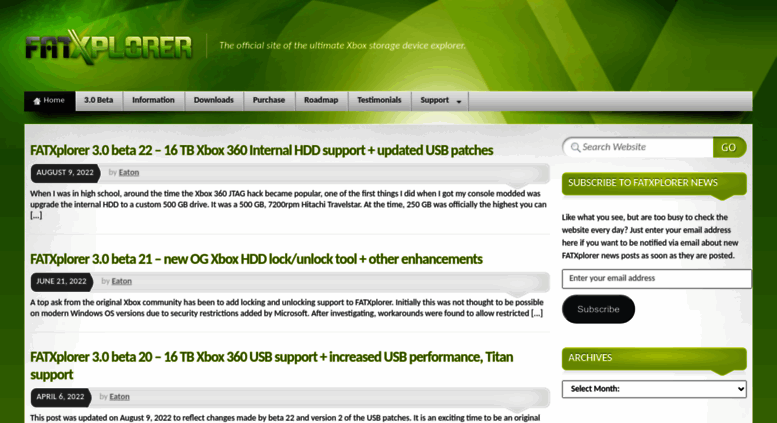
Fatxplorer Serial Port. Initializes a new instance of the SerialPort class using the specified port name, baud rate, parity bit, data. Use this class to control a serial port file resource. Many of you will have already heard of or use XBMC on other hardware (Apple TV etc.), well it all started on the humble XBox hence it’s name (XBox.
A connector used for a serial port on an computer along with the serial port symbol. In, a serial port is a interface through which information transfers in or out one at a time (in contrast to a ). Throughout most of the history of, data was transferred through serial ports to devices such as modems,, and various peripherals. While such interfaces as,, and all send data as a serial, the term 'serial port' usually identifies hardware more or less compliant to the standard, intended to interface with a or with a similar communication device. Modern computers without serial ports may require USB-to-serial converters to allow compatibility with RS-232 serial devices.
Serial ports are still used in applications such as industrial automation systems, scientific instruments, systems and some industrial and consumer products. Computers may use a serial port as a control console for diagnostics. Network equipment (such as routers and switches) often use serial console for configuration. Serial ports are still used in these areas as they are simple, cheap and their console functions are highly standardized and widespread. A serial port requires very little supporting software from the host system.
Contents • • • • • • • • • • • • • • • • • • • • Hardware [ ] Some computers, such as the, use an called a. This IC converts characters to and from form, implementing the timing and framing of data in hardware.
Very low-cost systems, such as some early, would instead use the to send the data through an pin, using the technique. Before (LSI) UART integrated circuits were common, a would have a serial port made of multiple small-scale integrated circuits to implement shift registers, logic gates, counters, and all the other logic for a serial port. Early home computers often had proprietary serial ports with pinouts and voltage levels incompatible with RS-232. Inter-operation with RS-232 devices may be impossible as the serial port cannot withstand the voltage levels produced and may have other differences that ' the user to products of a particular manufacturer. Low-cost processors now allow higher-speed, but more complex, serial communication standards such as and to replace RS-232. These make it possible to connect devices that would not have operated feasibly over slower serial connections, such as mass storage, sound, and video devices.
Many personal computer motherboards still have at least one serial port, even if accessible only through a. Small-form-factor systems and laptops may omit RS-232 connector ports to conserve space, but the electronics are still there. RS-232 has been standard for so long that the circuits needed to control a serial port became very cheap and often exist on a single chip, sometimes also with circuitry for a parallel port. A converter from USB to an RS-232 compatible serial port; more than a physical transition, it requires a driver in the host system software and a built-in processor to emulate the functions of the compatible serial port hardware. DTE and DCE [ ] The individual signals on a serial port are unidirectional and when connecting two devices the outputs of one device must be connected to the inputs of the other. Devices are divided into two categories (DTE) and (DCE).
A line that is an output on a DTE device is an input on a DCE device and vice versa so a DCE device can be connected to a DTE device with a straight wired cable. Conventionally, computers and terminals are DTE while modems and peripherals are DCE. If it is necessary to connect two DTE devices (or two DCE devices but that is more unusual) a cross-over, in the form of either an adapter or a cable, must be used. Male and female [ ].
DE-9 gender changers, showing both male (visible on the left) and female DE-9 connectors (visible on the right) Generally, serial port connectors are gendered, only allowing connectors to mate with a connector of the opposite gender. With connectors, the male connectors have protruding pins, and female connectors have corresponding round sockets. Either type of connector can be mounted on equipment or a panel; or terminate a cable. Connectors mounted on DTE are likely to be male, and those mounted on DCE are likely to be female (with the cable connectors being the opposite). Blackout 2 method man and redman zip full. However, this is far from universal; for instance, most serial printers have a female DB25 connector, but they are DTEs. Connectors [ ] While the RS-232 standard originally specified a 25-pin, many designers of personal computers chose to implement only a subset of the full standard: they traded off compatibility with the standard against the use of less costly and more compact connectors (in particular the DE-9 version used by the original ). The desire to supply serial interface cards with two ports required that IBM reduce the size of the connector to fit onto a single card back panel.
You can shop the various departments and pick up everything you need for home and family. Descargar idioma espanol corel draw x7 download. It sells a range of goods, including home furnishings, clothing for adults and kids, and appliances.